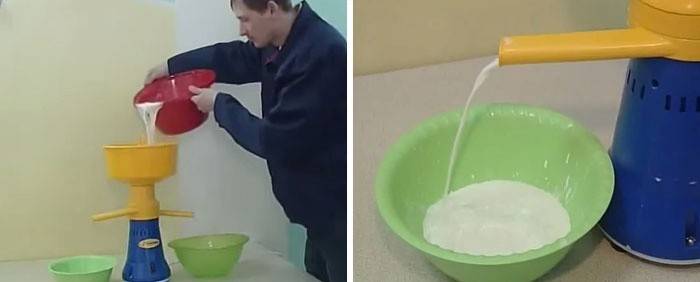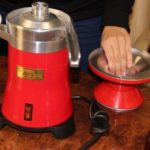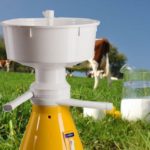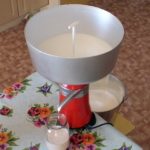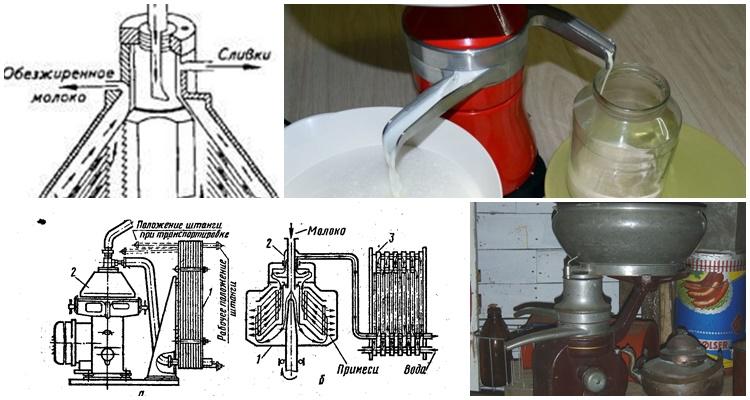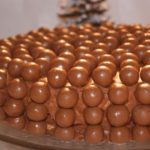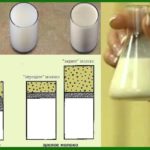No one will argue that homemade sour cream, cream and butter are several times tastier and healthier than store-bought ones. It is enough to purchase a simple device - a separator, and there will always be fresh dairy products on the table. But after a while, many people have difficulties with the unit, and the question arises why a brand new separator does not separate cream from milk well. To prevent and eliminate this problem, it is enough to know how to assemble and operate the device.
Separator assembly rules
A separator is a mechanical device that extracts cream from fresh milk and makes butter. They are manual and electric, but inside both are arranged the same way:
- Housing (includes power button and cord if the unit is powered).
- Engine.
- Drum.
- Receivers for skim milk and cream.
- Float chamber and float.
- Milk receiver.
- Traffic jams.
When all the details have been studied, you can safely assemble the separator and get ready for work. Step-by-step assembly will not take more than 10 minutes:
- First, the drum must be secured on top of the motor shaft. It should fit easily, but stay tight. It is better to make several manual turns for reliability and to avoid distortions.
- Next, receivers are placed on top of the structure. The skim receiver comes first, followed by the cream. It is important not to mix them up, since one of them has a notch that needs to be aligned with the hole on the body. The cream receiver can be installed in any direction as desired.
- A float chamber is attached to the drains, and the float itself is installed on top in the form of a white or transparent disk.
- The penultimate stage is installing the bowl. It doesn't need to be secured. Under the weight of the milk, the bowl itself will hold firmly.
- In the end, all that remains is to install the plug/faucet. It regulates the flow of milk into the bowl.
How to adjust the device
One of the first difficulties that separator users encounter is insufficient cream fat content. The separation occurs in the drum of the device, where, under the influence of centrifugal force, the milk breaks down into whey and cream.
This is quite easy to do. You need to tighten the screw in the top plate of the drum. The maximum fat content of cream is 0.05. To achieve it, tighten the screw until it stops, and then make one and a half turns back.
In this position, the separator will work for a maximum of 15 minutes. Then it needs to be disassembled and washed, since grease clogs the parts. It is optimal to set the screw value to 3-3.5 turns. It must be borne in mind that the fattier the cream, the lower its ratio to the milk used.
Old separator models lacked the ability to customize and produced products with only one fat content. It was impossible to regulate the thickness of the liquid in them. New devices, for example, the IRID separator, are suitable for producing both liquid and thick cream.
Reasons why the separator does not work
The device may not work at all or may not work properly due to breakdowns or assembly errors.
How are mechanism defects and separator operating features related?
- The drum does not respond to button presses. Everything is simple here: either the button is faulty, or the internal contacts have come loose, or the motor itself has failed.
- The separator produces cream of incorrect fat content and thickness, even with the correct screw settings. This means that the adjustment hole is clogged. Cleaning with a brush will quickly improve the situation.
- The separator parts rattle when starting up. If there is no milk in the bowl, then extraneous sounds are normal. If there is liquid, but the grinding noise remains, the reason is improper assembly of the device components.
- During operation, knocks are heard inside the separator. There are several reasons for this. The drum could be clogged or its parts may not be assembled correctly. The nuts that secure the motor are loose. The motor shaft is bent or deformed. The separator is tilted.Factory defects are to blame, and it is worth taking the device in for repair under warranty.
- The drum does not gain the required pressure and number of revolutions. Option one: insufficient power supply. Option two: faulty socket or wiring. Option three: the unit’s engine is broken.
Why does the separator not separate the cream?
It happens that the separator ceases to fulfill its intended purpose even when the drum speed increases. Why is this happening?
- Milk does not flow into the drum. A clogged hole in the plug or faucet is to blame for this.
- The rubber seal between the parts of the drum does not fit tightly or its shape is broken. Ideally, the elastic band should be intact and round.
- The thicker the cream, the faster the internal parts of the mechanism clog. If you do not wash them in time, the work will stop.
- If the machine worked continuously for more than half an hour, and then stopped producing cream, then it was probably clogged or broken due to overload.

